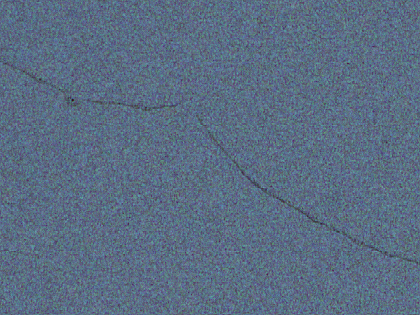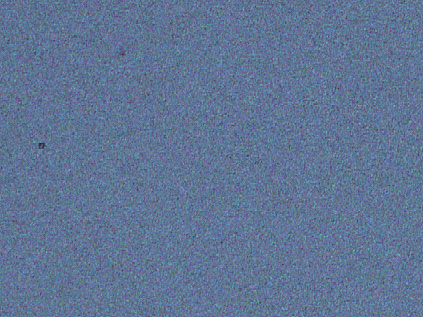
But - are Sensia and Provia are exactly the same film in different packaging? If this is so, the much lower price of Sensia 35mm would make it preferably to the Provia variations, which also need cold-storage and prompt processing.
Sensia is not identical to Provia, but it took an exhaustive test, with results too boring to reproduce here, to prove it.
I took three films and shot a bracketed strip comprising 17 exposures at half-stop intervals. The subject was a Macbeth color checker. The test was repeated twice in full on each roll to iron out any possible variations or errors. The half-stop bracketing on a Minolta 9xi body with 50mm macro was based in shutter speed variation rather than aperture. The daylight used ensured the speeds stayed within the range of reciprocity.
Two rolls - one Provia 100 RDP II, and one Sensia 100 RD - were processed by Warrens Imaging of Leeds, UK (a professional service lab). The other roll of Sensia was sent to the Fujifilm Leamington Spa, UK, laboratory in a process-paid mailer; this provides the lowest-cost overall mounted E-6 film and process combination.
My purpose was to see whether Sensia and Provia matched each other when pro-lab processed, and whether Fuji-processed Sensia matched either.
However, in the USA where far more 35mm is used for 'real' work, Provia is being sold up to professionals as offering more shadow detail. Our prolab processed tests confirm this, but the difference is so slight it only shows up on the very darkest frames - minus 3.5 and minus 4 stops.
Provia was just able to resolve more visible detail. The actual brightness difference was equivalent to less than half a stop. By the time the 2-stops under bracket frames were compared, there was no visible difference, and this continued all the way up to 4 stops overexposure, where the films were apparently identical.
The differences are so slight that film choice would make no difference to 99 per cent of subjects.

Sensia shown at 72dpi from a 5,000dpi scan (work it out for yourself - it's around a 60X enlargement on a 72dpi computer screen, or what you would see on a five foot by seven and a half foot print). the scratch is from pro lab processing, not Fuji's low-cost process paid, which had no visible flaws.

Provia grain shown to the same size is noticeably finer and smoother
Next, the grain of the two identically processed films was compared. The difference was so small that it would not be seen in a 16 x 20" print. The grain shown is from a mid-grey patch; note the drying mark line on the Sensia sample, although professionally processed.
Finally, the Fuji lab pre-paid processing was compared to the professional laboratory quality.
Color was an exact match, and the film was clean, without drying marks. Mounting was correct despite dark bracket frames (an enclosed slip told me my film was underexposed!). While the density was identical to the pro lab rolls from +4 to -2, the -3 to -4 exposures showed much greater shadow detail - one stop better than prolab processed Sensia, and half a stop better than Provia.
Different pro labs might match this, but finding one would be a hit and miss affair. The scale of processing at the Fuji lab ensures maximum consistency and quality control, so you could expect all Fuji E-6 to share this quality of open shadow detail without loss of d-max.
Their price for non-PP films is not so favourable at �4.90 for 36 exposure process and mount - and push/pull processing, free from many pro labs if you don't need a same-day turnround, costs a staggering �2.50 per stop.
Non-process paid Provia 100 135/36 costs from around �6, and if you buy pro E-6 dev with mounting, you pay as much again for the processing. Going the full professional-stock and lab route effectively doubles your costs.
We have had some complaints about loose dust (from mounts and boxes) on Fuji lab processed films, but professional E-6 processing, even by the best labs, is no guarantee of freedom from drying marks, scratches or dust (see the grain scans, taken from the final frame of the Warrens-processed rolls). It is common for a box of pre-paid process Fuji slides to be clinically clean, scanning with no need for retouching.
This is hardly ever the case with pro E-6 film returned in cut strip sleeves, pulled out, and mounted by the photographer. Most of the so-called anti-static sleeving used by pro labs clings to the film by vacuum if not by static, and pulling a strip out not only fingerprints it but often scratches it. Our Warrens films were returned in the only scratch-free packing I know, continuous strip sleeving of a very flimsy type which falls apart when you unroll the film. You can't store films in this sleeving, but it is so light in gauge that it does not scratch.
Fuji lab processing may take longer than prolab E-6; our films were posted Monday, the Warrens rolls came back on Wednesday, the Fuji on Friday. Fuji may be as fast as a same-day pro lab at quieter times of year.